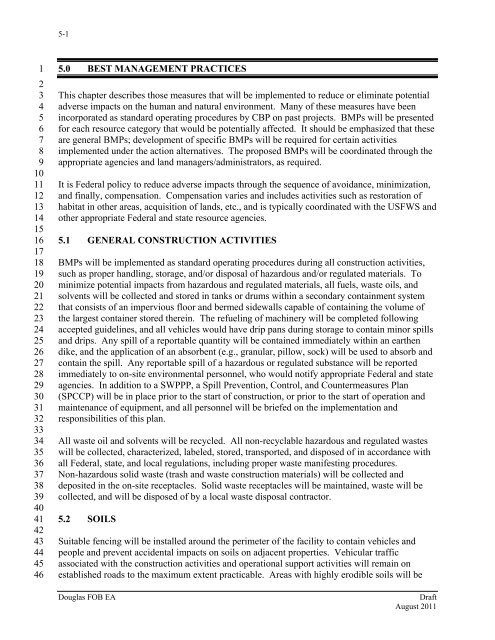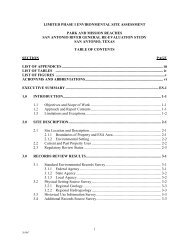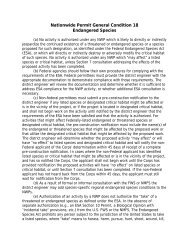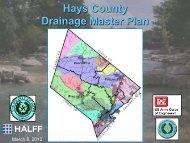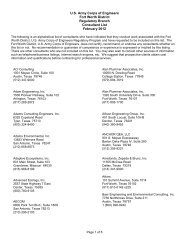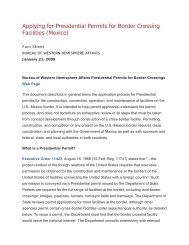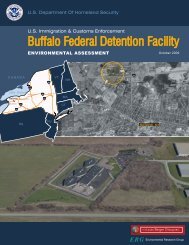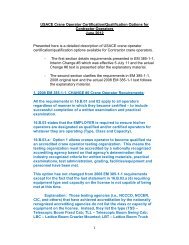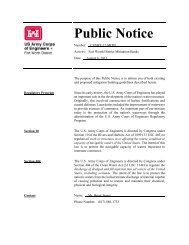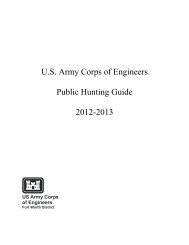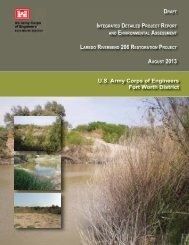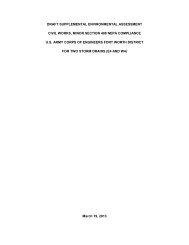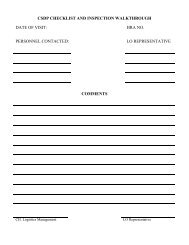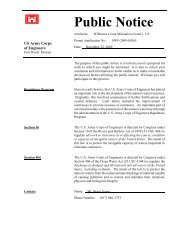environmental assessment us border patrol, tucson sector
environmental assessment us border patrol, tucson sector
environmental assessment us border patrol, tucson sector
You also want an ePaper? Increase the reach of your titles
YUMPU automatically turns print PDFs into web optimized ePapers that Google loves.
5-1123456789101112131415161718192021222324252627282930313233343536373839404142434445465.0 BEST MANAGEMENT PRACTICESThis chapter describes those measures that will be implemented to reduce or eliminate potentialadverse impacts on the human and natural environment. Many of these measures have beenincorporated as standard operating procedures by CBP on past projects. BMPs will be presentedfor each resource category that would be potentially affected. It should be emphasized that theseare general BMPs; development of specific BMPs will be required for certain activitiesimplemented under the action alternatives. The proposed BMPs will be coordinated through theappropriate agencies and land managers/administrators, as required.It is Federal policy to reduce adverse impacts through the sequence of avoidance, minimization,and finally, compensation. Compensation varies and includes activities such as restoration ofhabitat in other areas, acquisition of lands, etc., and is typically coordinated with the USFWS andother appropriate Federal and state resource agencies.5.1 GENERAL CONSTRUCTION ACTIVITIESBMPs will be implemented as standard operating procedures during all construction activities,such as proper handling, storage, and/or disposal of hazardo<strong>us</strong> and/or regulated materials. Tominimize potential impacts from hazardo<strong>us</strong> and regulated materials, all fuels, waste oils, andsolvents will be collected and stored in tanks or drums within a secondary containment systemthat consists of an impervio<strong>us</strong> floor and bermed sidewalls capable of containing the volume ofthe largest container stored therein. The refueling of machinery will be completed followingaccepted guidelines, and all vehicles would have drip pans during storage to contain minor spillsand drips. Any spill of a reportable quantity will be contained immediately within an earthendike, and the application of an absorbent (e.g., granular, pillow, sock) will be <strong>us</strong>ed to absorb andcontain the spill. Any reportable spill of a hazardo<strong>us</strong> or regulated substance will be reportedimmediately to on-site <strong>environmental</strong> personnel, who would notify appropriate Federal and stateagencies. In addition to a SWPPP, a Spill Prevention, Control, and Countermeasures Plan(SPCCP) will be in place prior to the start of construction, or prior to the start of operation andmaintenance of equipment, and all personnel will be briefed on the implementation andresponsibilities of this plan.All waste oil and solvents will be recycled. All non-recyclable hazardo<strong>us</strong> and regulated wasteswill be collected, characterized, labeled, stored, transported, and disposed of in accordance withall Federal, state, and local regulations, including proper waste manifesting procedures.Non-hazardo<strong>us</strong> solid waste (trash and waste construction materials) will be collected anddeposited in the on-site receptacles. Solid waste receptacles will be maintained, waste will becollected, and will be disposed of by a local waste disposal contractor.5.2 SOILSSuitable fencing will be installed around the perimeter of the facility to contain vehicles andpeople and prevent accidental impacts on soils on adjacent properties. Vehicular trafficassociated with the construction activities and operational support activities will remain onestablished roads to the maximum extent practicable. Areas with highly erodible soils will beDouglas FOB EADraftAug<strong>us</strong>t 2011


